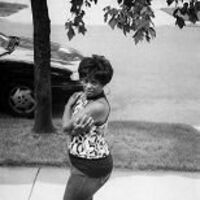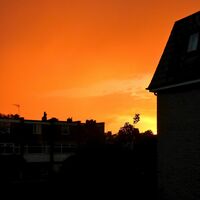
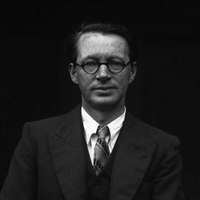
Edwin Muir (15 May 1887– 3 January 1959) was an Orcadian poet, novelist and translator, born on a farm in Deerness. He is remembered for his deeply felt and vivid poetry in plain language with few stylistic preoccupations, and for his extensive translations of Franz Kafka’s works with his wife Willa Muir.
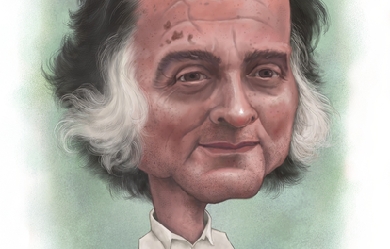

Robert Edward Duncan (January 7, 1919 in Oakland, California– February 3, 1988) was an American poet and a devotee of H.D. and the Western esoteric tradition who spent most of his career in and around San Francisco. Though associated with any number of literary traditions and schools, Duncan is often identified with the poets of the New American Poetry and Black Mountain College. Duncan saw his work as emerging especially from the tradition of Pound, Williams and Lawrence. Duncan was a key figure in the San Francisco Renaissance.
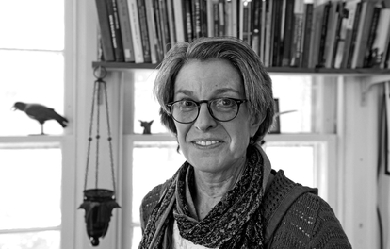

Claudia Emerson is an American poetess born on January 13, 1957 in Chatham, Virginia. She has won the 2006 Pulitzer Prize for her poetry collection Late Wife, and received several other awards. She has also written several poetry books. As of the Fall of 2013, she is teaching classes at Virginia Commonwealth University.

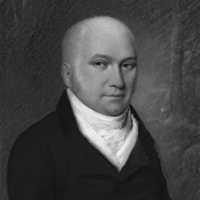
Thomas Lovell Beddoes (30 June 1803– 26 January 1849) was an English poet, dramatist and physician. Biography Born in Clifton, Bristol, England, he was the son of Dr. Thomas Beddoes, a friend of Samuel Taylor Coleridge, and Anna, sister of Maria Edgeworth. He was educated at Charterhouse and Pembroke College, Oxford. He published in 1821 The Improvisatore, which he afterwards endeavoured to suppress. His next venture, a blank-verse drama called The Bride’s Tragedy (1822), was published and well reviewed, and won for him the friendship of Barry Cornwall. Beddoes’ work shows a constant preoccupation with death. In 1824, he went to Göttingen to study medicine, motivated by his hope of discovering physical evidence of a human spirit which survives the death of the body. He was expelled, and then went to Würzburg to complete his training. He then wandered about practising his profession, and expounding democratic theories which got him into trouble. He was deported from Bavaria in 1833, and had to leave Zürich, where he had settled, in 1840. He continued to write, but published nothing. He led an itinerant life after leaving Switzerland, returning to England only in 1846, before going back to Germany. He became increasingly disturbed, and committed suicide by poison at Basel, in 1849, at the age of 45. For some time before his death he had been engaged on a drama, Death’s Jest Book, which was published in 1850 with a memoir by his friend, T. F. Kelsall. His Collected Poems were published in 1851. Evaluation Critics have faulted Beddoes as a dramatist. According to Arthur Symons, “of really dramatic power he had nothing. He could neither conceive a coherent plot, nor develop a credible situation.” His plots are convoluted, and such was his obsession with the questions posed by death that his characters lack individuation; they all struggle with the same ideas that vexed Beddoes. But his poetry is “full of thought and richness of diction”, in the words of John William Cousin, who praised Beddoes’ short pieces such as “If thou wilt ease thine heart” (from Death’s Jest-Book, Act II) and “If there were dreams to sell” ("Dream-Pedlary") as “masterpieces of intense feeling exquisitely expressed”. Lytton Strachey referred to Beddoes as “the last Elizabethan”, and said that he was distinguished not for his “illuminating views on men and things, or for a philosophy”, but for the quality of his expression. Philip B. Anderson said the lyrics of Death’s Jest Book, exemplified by “Sibylla’s Dirge” and “The Swallow Leaves Her Nest”, are “Beddoes’ best work. These lyrics display a delicacy of form, a voluptuous horror, an imagistic compactness and suggestiveness, and, occasionally, a grotesque comic power that are absolutely unique.” References Wikipedia—https://en.wikipedia.org/wiki/Thomas_Lovell_Beddoes

I write 'Down to Earth' Poems about things that I see everyday. My poems can be taken in any way though I find my inspiration stems from reading about World Problems and Social differences. My ideas are fueled from daily disappointments over-hearing or reading about unnecessary Social categorizations like Race, Ethnicity, Class, Gender, Sexual Orientation and the Public Self. I write to bring light upon a conforming Society with many faults. I want change.


Barcroft Henry Thomas Boake (26 March 1866 – 2 May 1892) was an Australian poet. Born in Sydney, Boake worked as a surveyor and a boundary rider, but is best remembered for his poetry, a volume of which was published five years after his death. Boake is believed to have committed suicide. His body was found hanging by the neck from a stockwhip at Middle Harbour in Sydney eight days after he disappeared on 2 May 1892. One writer on Boake’s life has mentioned that the suicide took place during the 1891-93 depression when the poet was unable to find work, also noting that “it has been suggested that he killed himself for the love of one of the McKeahnie girls,” sisters of the horseman Charlie McKeahnie.
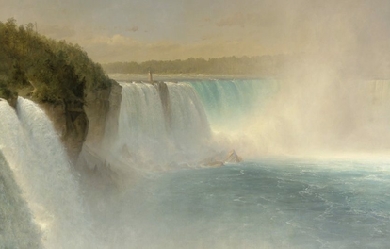
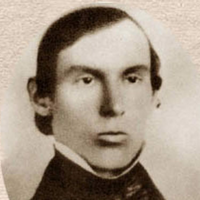
Jones Very (August 28, 1813– May 8, 1880) was an American poet, essayist, clergyman, and mystic associated with the American Transcendentalism movement. He was known as a scholar of William Shakespeare and many of his poems were Shakespearean sonnets. He was well-known and respected amongst the Transcendentalists, though he had a mental breakdown early in his career. Born in Salem, Massachusetts to two unwed first cousins, Jones Very became associated with Harvard University, first as an undergraduate, then as a student in the Harvard Divinity School and as a tutor of Greek. He heavily studied epic poetry and was invited to lecture on the topic in his home town, which drew the attention of Ralph Waldo Emerson. Soon after, Very asserted that he was the Second Coming of Christ, which resulted in his dismissal from Harvard and his eventual institutionalization in an insane asylum. When he was released, Emerson helped him issue a collection called Essays and Poems in 1839. Very lived the majority of his life as a recluse from then on, issuing poetry only sparingly. He died in 1880. Biography Very was born on August 28, 1813, in Salem, Massachusetts and spent much of his childhood at sea. He was the oldest of six children, born out of wedlock to two first cousins. His mother, Lydia Very, was known for being an aggressive freethinker who made her atheistic beliefs known to all. She believed that marriage was only a moral arrangement and not a legal one. His father, also named Jones Very, was a captain during the War of 1812 and was held in Nova Scotia for a time by the British as a prisoner of war. When the younger Jones Very was ten, his father, by then a shipmaster, took him on a sailing voyage to Russia. A year later, his father had Very serve as a cabin boy on a trip to New Orleans, Louisiana. His father died on the return trip, apparently due to a lung disease he contracted while in Nova Scotia. As a boy, Very was studious, well-behaved, and solitary. By 1827, he left school when his mother told him he must take the place of his father and care for the family. After working at an auction house, Very became a paid assistant to the principal of a private school in Salem as a teenager. The principal, Henry Kemble Oliver, exposed his young assistant to philosophers and writers, including James Mackintosh, to influence his religious beliefs and counteract his mother’s atheism. He composed a poem for the dedication of a new Unitarian church in Salem: “O God; On this, our temple, rest thy smile, Till bent with days its tower shall nod”. Harvard years Very enrolled at Harvard College in 1834. During his college years, he was shy, studious, and ambitious of literary fame. He had become interested in the works of Lord Byron, William Wordsworth, Samuel Taylor Coleridge, Johann Wolfgang von Goethe and Friedrich Schiller. His first few poems were published in his hometown newspaper, the Salem Observer, while he completed his studies. He graduated from Harvard in 1836, ranked number two in his class. He was chosen to speak at his commencement; his address was titled “Individuality”. After graduating, Very served as a tutor in Greek before entering Harvard Divinity School, thanks to the financial assistance of an uncle. Though Very never completed his divinity degree, he held temporary pastorates in Maine, Massachusetts, and Rhode Island. Very became known for his ability to draw people into literature, and was asked to speak at a lyceum in his hometown of Salem in 1837. There he was befriended by Elizabeth Peabody, who wrote to Emerson suggesting Very lecture in Concord. In 1838, Ralph Waldo Emerson arranged a talk by Very at the Concord Lyceum. Very lectured on epic poetry on April 4 of that year, after he had walked twenty miles from Salem to Concord to deliver it. Emerson made up for the meager $10 payment by inviting Very to his home for dinner. Emerson signed Very’s personal copy of Nature with the words: "Har[mony] of Man with Nature Must Be Reconciled With God". For a time, Very tried to recruit Nathaniel Hawthorne as a brother figure in his life. Though Hawthorne treated him kindly, he was not impressed by Very. Unlike Hawthorne, Emerson found him “remarkable” and, when Very showed up at his home unannounced along with Cornelius Conway Felton in 1838, Emerson invited several other friends, including Henry David Thoreau, to meet him. Emerson, however, was surprised at Very’s behavior in larger groups. “When he is in the room with other persons, speech stops, as if there were a corpse in the apartment”, he wrote. Even so, in May 1838, the same month Very published his “Epic Poetry” lecture in the Christian Examiner, Emerson brought Very to a meeting of the Transcendental Club, where the topic of discussion was “the question of mysticism”. At the meeting, held at the home of Caleb Stetson in Medford, Massachusetts, Very was actively engaged in the discussion, building his reputation as a mystic within that circle. Mental health Very was known as an eccentric, prone to odd behavior and may have suffered from bipolar disorder. The first signs of a breakdown came shortly after meeting Emerson, as Very was completing an essay on William Shakespeare. As Very later explained, “I felt within me a new will... it was not a feeling of my own but a sensible will that was not my own... These two consciousnesses, as I may call them, continued with me”. In August 1837, while traveling by train, he was suddenly overcome with terror at its speed until he realized he was being “borne along by a divine engine and undertaking his life-journey”. As he told Henry Ware, Jr., professor of pulpit eloquence and pastoral care at Harvard Divinity School, divine inspiration helped him suddenly understand the twenty-fourth chapter of the Gospel of Matthew and that Christ was having his Second Coming within him. When Ware did not believe him, Very said, “I had thought you did the will of the Father, and that I should receive some sympathy from you—But I now find that you are doing your own will, and not the will of your father”. Very also claimed that he was under the influence of the Holy Spirit and composed verse while in this state. Emerson did not believe Very’s claim and, noting the poor writing, he asked, "cannot the spirit parse & spell?" Very said he was also tormented by strong sexual desires which he believed were only held in check by the will of God. To help control himself, he avoided speaking with or even looking at women—he called it his “sacrifice of Beauty”. One of Very’s students, a fellow native of Salem named Samuel Johnson, Jr., said that people ridiculed Very behind his back since he had “gained the fame of being cracked (or crazy, if you are not acquainted with Harvard technicalities)”. During one of his tutoring sessions, Very declared that he was “infallible: that he was a man of heaven, and superior to all the world around him”. He then cried out to his students, “Flee to the mountains, for the end of all things is at hand”. Harvard president Josiah Quincy III relieved Very of his duties, referring to a “nervous collapse” that required him to be left in the care of his younger brother Washington Very, himself a freshman at Harvard. After returning to Salem, he visited Elizabeth Peabody on September 16, 1838, apparently having given up his rule “not to speak or look at women”. As she recalled, He looked much flushed and his eyes very brilliant and unwinking. It struck me at once that there was something unnatural—and dangerous in his air—As soon as we were within the parlor door he laid his hand on my head—and said “I come to baptize you with the Holy Ghost and with Fire”—and then he prayed. After this, Very told her she would soon feel different, explaining, “I am the Second Coming”. He performed similar “baptisms” to other people throughout Salem, including ministers. It was finally Reverend Charles Wentworth Upham who had him committed. Very was institutionalized for a month at a hospital near Boston, the McLean Asylum, as he wrote, “contrary to my will”. While there, he finished an essay on Hamlet, arguing that the play is about “the great reality of a soul unsatisfied in its longings after immortality” and that “Hamlet has been called mad, but as we think, Shakespeare thought more of his madness than he did of the wisdom of the rest of the play”. During his stay at the hospital, Very lectured his fellow patients on Shakespeare and on poetry in general. He was released on October 17, 1838, though he refused to renounce his beliefs. His fellow patients reportedly thanked him as he left. McLean’s superintendent Luther Bell took credit for saving him “from the delusion of being a prophet extraordinaire”, which Luther thought was caused by Very’s digestive system being “entirely out of order”. The same month he was released, Very stayed with Emerson at his home in Concord for a week. While he was visiting, Emerson wrote in his journal on October 29, “J. Very charmed us all by telling us he hated us all.” Amos Bronson Alcott wrote of Very in December 1838: I received a letter on Monday of this week from Jones Very of Salem, formerly Tutor in Greek at Harvard College—which institution he left, a few weeks since, being deemed insane by the Faculty. A few weeks ago he visited me....He is a remarkable man. His influence at Cambridge on the best young men was very fine. His talents are of a high order....Is he insane? If so, there yet linger glimpses of wisdom in his memory. He is insane with God—diswitted in the contemplation of the holiness of Divinity. He distrusts intellect... Living, not thinking, he regards as the worship meet for the soul. This is mysticism in its highest form. Poetry Emerson saw a kindred spirit in Very and defended his sanity. As he wrote to Margaret Fuller, “Such a mind cannot be lost”. Emerson was sympathetic with Very’s plight because he himself had recently been ostracized after his controversial lecture, the “Divinity School Address”. He helped Very publish a small volume, Essays and Poems in 1839. The poems collected in this volume were chiefly Shakespearean sonnets. Very also published several poems in the Western Messenger between 1838 and 1840 as well as in The Dial, the journal of the Transcendentalists. He was disappointed, however, that Emerson, serving as editor of the journal, altered his poems. Very wrote to Emerson in July 1842, “Perhaps they were all improvements but I preferred my own lines. I do not know but I ought to submit to such changes as done by the rightful authority of an Editor but I felt a little sad at the aspect of the piece.” He was never widely read, and was largely forgotten by the end of the nineteenth century, but in the 1830s and 1840s the Transcendentalists, including Emerson, as well as William Cullen Bryant, praised his work. Very continued writing throughout his life, though sparingly. Many of his later poems were never collected but only distributed in manuscript form among the Transcendentalists. In January 1843, his work was included in the first issue of The Pioneer, a journal edited by James Russell Lowell which also included the first publication of Edgar Allan Poe’s “The Tell-Tale Heart”. Final years and death Jones Very believed his role as a prophet would last only twelve months. By September 1839, his role was complete. Emerson suggested that Very’s temporary mental instability was worth the message he had delivered. In his essay “Friendship”, Emerson referred to Very: I knew a man who under a certain religious frenzy cast off this drapery, and spoke to the conscience of every person he encountered, and that with great insight and beauty. At first, all men agreed he was mad. But persisting, he attained to the advantage of bringing every man of his acquaintance into true relations with him... To stand in true relations with men in a false age is worth a fit of insanity, is it not? The last decades of Very’s life were spent in Salem as a recluse under the care of his sister. It was during these years that he held roles as a visiting minister in Eastport, Maine and North Beverly, Massachusetts, though these roles were temporary because he had become too shy. By age 45, he had retired. In his last forty years, Very did very little. As biographer Edwin Gittleman wrote, "Although he lived until 1880, Very’s effective life was over by the end of 1840." He died on May 8, 1880 and, upon hearing of Very’s death, Alcott wrote a brief remembrance on May 16, 1880: The newspapers record the death of Jones Very of Salem, Mass. It was my fortune to have known the man while he was tutor in Harvard College and writing his Sonnets and Essays on Shakespeare, which were edited by Emerson, and published in 1839. Very was then the dreamy mystic of our circle of Transcendentalists, and a subject of speculation by us. He professed to be taught by the Spirit and to write under its inspiration. When his papers were submitted to Emerson for criticism the spelling was found faulty and on Emerson’s pointing out the defect, he was told that this was by dictation of the Spirit also. Whether Emerson’s witty reply, “that the Spirit should be a better speller,” qualified the mystic’s vision does not appear otherwise than that the printed volume shows no traces of illiteracy in the text. Very often came to see me. His shadowy aspect at times gave him a ghostly air. While walking by his side, I remember, he seemed spectral,—and somehow using my feet instead of his own, keeping as near me as he could, and jostling me frequently. His voice had a certain hollowness, as if echoing mine. His whole bearing made an impression as if himself were detached from his thought and his body were another’s. He ventured, withal, to warn me of falling into idolatries, while he brought a sonnet or two (since printed) for my benefit. His temperament was delicate and nervous, disposed to visionariness and a dreamy idealism, stimulated by over-studies and the school of thought then in the ascendant. His sonnets and Shakespearean essays surpass any that have since appeared in subtlety and simplicity of execution. Critical assessment The first critical review of Very’s book was written by Margaret Fuller and published in Orestes Brownson’s Boston Quarterly Review; it said Very’s poems had “an elasticity of spirit, a genuine flow of thought, and unsought nobleness and purity”, though she admitted she preferred the prose in the collection over the poetry. She mocked the “sing song” style of the poems and questioned his religious mission. She concluded: “I am... greatly interested in Mr Very. He seems worthy to be well known.” James Freeman Clarke admired Very’s poetry enough to have several published in his journal, the Western Messenger, between 1838 and 1840. William Ellery Channing admired Very’s poetry as well, writing that his insanity “is only superficial”. Richard Henry Dana, Sr. also commented positively on Very’s poetry: “The thought is deeply spiritual; and while there is a certain character of peculiarity which we so often find in like things from our old writers, there is a freedom from quaintness... Indeed, I know not where you would... find any thing in this country to compare with these Sonnets.” Editor and critic Rufus Wilmot Griswold was impressed enough by Very’s poetry to include him in the first edition of his anthology The Poets and Poetry of America in 1842. He wrote to Emerson asking for more information about him and expressing his opinion of his poetry: “Though comparatively unknown, he seems to be a true poet.” The modern reassessment of Jones Very as an author of literary importance can be dated to a 1936 essay by Yvor Winters who wrote of the poet, “In the past two decades two major American writers have been rediscovered and established securely in their rightful places in literary history. I refer to Emily Dickinson and Herman Melville. I am proposing the establishment of a third.” Winters, in speaking of Very’s relations with Emerson and his circle, concluded, “The attitude of the Transcendentalists toward Very is instructive and amusing, and it proves beyond cavil how remote he was from them. In respect to the doctrine of the submission of the will, he agreed with them in principle; but whereas they recommended the surrender, he practised it, and they regarded him with amazement.” Subsequently, William Irving Bartlett, in 1942, outlined the basic biographical facts of Very’s life in Jones Very, Emerson’s “Brave Saint.” A complete scholarly edition of Very’s poetic works belatedly appeared, over a century after the poet’s death, in 1993. References Wikipedia—https://en.wikipedia.org/wiki/Jones_Very
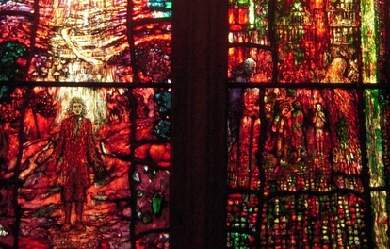
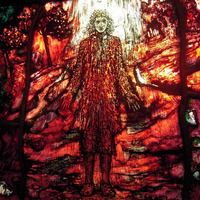
Thomas Traherne (1636 or 1637– ca. 27 September 1674) was an English poet, clergyman, theologian, and religious writer. Little information is known about his life. The intense, scholarly spirituality in his writings has led to his being commemorated by some parts of the Anglican Communion on 10 October (the anniversary of his burial in 1674) or on September 27. The work for which Traherne is best known today is the Centuries of Meditations, a collection of short paragraphs in which he reflects on Christian life and ministry, philosophy, happiness, desire and childhood. This was first published in 1908 after having been rediscovered in manuscript ten years earlier. His poetry likewise was first published in 1903 and 1910 (The Poetical Works of Thomas Traherne, B.D. and Poems of Felicity). His prose works include Roman Forgeries (1673), Christian Ethics (1675), and A Serious and Patheticall Contemplation of the Mercies of God (1699). Traherne’s poetry is often associated with the metaphysical poets, even though his poetry was unknown for two centuries after his death. His manuscripts were kept among the private papers of the Skipps family of Ledbury, Herefordshire, until 1888. Then, in the winter of 1896–97, two manuscript volumes containing his poems and meditations were discovered by chance for sale in a street bookstall. The poems were initially thought to be the work of Traherne’s contemporary Henry Vaughan (1621–95). Only through research was his identity uncovered and his work prepared for publication under his name. As a result, much of his work was not published until the first decade of the 20th century. Traherne’s writings frequently explore the glory of creation and what he perceived as his intimate relationship with God. His writing conveys an ardent, almost childlike love of God, and is compared to similar themes in the works of later poets William Blake, Walt Whitman, and Gerard Manley Hopkins. His love for the natural world is frequently expressed in his works by a treatment of nature that evokes Romanticism—two centuries before the Romantic movement. Biography Very little information is known about Thomas Traherne’s life. According to antiquarian Anthony à Wood (1632–1695), Traherne was a “shoemaker’s son of Hereford” born in either 1636 or 1637. Bertram Dobell identifies this shoemaker as John Traherne (b. 1566). However, other sources indicate that Thomas was the son of Philipp Traherne (or Trehearne) (1568–1645), a local innkeeper and twice Mayor of Hereford, and his third wife, Mary Lane. His birth or baptism is not recorded in parish registers. Traherne was educated at Hereford Cathedral School and matriculated in Brasenose College, Oxford, on 2 April 1652, receiving his baccalaureate degree on 13 October 1656. Five years later he was promoted to the degree of Master of Arts (Oxon.) on 6 November 1661, and he received a Bachelor of Divinity (B.D.) on 11 December 1669. After receiving his baccalaureate degree from Oxford in 1656, he took holy orders. The following year he was installed as the rector at Saint Mary’s Church in Credenhill near Hereford. He was appointed to the post at Credenhill on 30 December 1657 by the Commissioners for the Approbation of Public Preachers although at the time, he was not an ordained priest. A curious note appended to the record of his appointment is that Traherne counted upon the patronage of Ambella, Countess Dowager of Kent. Traherne served in this post for ten years although he was not ordained priest until after the restoration of the monarchy and the return of King Charles II. He was ordained at Launton near Bicester by Robert Skinner (1591–1670), the Bishop of Oxford, on 20 October 1660. In 1667 he became the private chaplain to Sir Orlando Bridgeman, 1st Baronet, of Great Lever, the Lord Keeper of the Great Seal to King Charles II, at Teddington (near Hampton Court) in Middlesex. Traherne died of smallpox at Bridgeman’s house in Teddington on 27 September 1674, having that day dictated a brief nuncupative will to his friend and neighbour John Berdoe, in which he made bequests to the servants who had looked after him and left his few belongings to his brother Philip and sister-in-law Susan. On 10 October 1674 he was buried in St Mary’s Church at Teddington, under the church’s reading desk. According to Anthony à Wood, Traherne “always led a simple and devout life; his will shows that he possessed little beyond his books, and thought it worth while to bequeath his ‘old hat.’” It is assumed, although largely unsubstantiated, that Traherne’s studies at Oxford may identify his Royalist leanings at a time when the Lord Protector Oliver Cromwell had deposed the monarchy after the English Civil War. The city of Oxford had been the centre of the Cavalier cause and the headquarters of the King’s forces before its surrender in May 1646 and the university was regarded as a focus of Royalist sentiment during the Interregnum. The claim that Traherne may have been a Royalist may be bolstered by an inscription on the tombstone of Philipp Traherne, thought to be his father, which eulogises Philipp’s fidelity to, and zeal for, the Royalist cause. Writings Much of Traherne’s work remains unpublished. He was not known during his lifetime, and only one of his works was published before his death in 1674 and two others were published shortly thereafter. Of his published work, almost all appeared posthumously, and most of it in the 20th century. Several unpublished manuscripts are held in museums, private collections and university archives, including the Bodleian Library at the University of Oxford, the British Library in London and the Beinecke Library at Yale University in New Haven, Connecticut. Traherne was an inconsequential literary figure during his lifetime and his works were not known or appreciated until long after his death. As a country priest he led a devout, humble life and did not participate in literary circles. Only one of his works, Roman Forgeries (1673), was published in his lifetime. Christian Ethicks (1675) followed soon after his death, and later A Serious and Patheticall Contemplation of the Mercies of God (1699), which was published as the work of an anonymous author whose character and background were discussed in a brief introduction by the publisher. From 1699 until the re-emergence of his work with Bertram Dobell’s editions in 1903, Traherne’s work fell into obscurity. If not for the chance discovery of an anonymous manuscript, his work and reputation might have been lost. Publication history and posthumous success At Traherne’s death in 1674 most of his manuscripts were bequeathed to his brother Philipp. After Philipp’s death they apparently passed into the possession of the Skipps family of Ledbury in Herefordshire, where they languished for almost 200 years. In 1888 the family’s assets were dissolved, yet the manuscripts did not re-emerge until 10 years later. In the winter of 1896–97, William T. Brooke of London discovered some anonymous manuscripts in a “barrow of books about to be trashed” or a “street bookstall”. Brooke thought that they might be lost works by Henry Vaughan and showed them to Alexander Grosart (1827–99), a Scottish clergyman and expert on Elizabethan and Jacobean literature who reprinted rare works. Grosart agreed that the manuscripts were by Vaughan and planned to include them in an edition of Vaughan’s works that he was preparing for publication. Grosart died in 1899 and the proposed edition was never completed. Grosart’s collection, including the manuscripts, was purchased by Charles Higham, a London bookseller, who asked his friend Bertram Dobell (1842–1914) to examine them. Dobell was convinced that they were not by Vaughan and soon discovered that they were by Traherne. The manuscripts, which included poetry as well as a collection of contemplative paragraphs “embodying reflexions on religion and morals”, were published as Centuries of Meditations. More Traherne manuscripts have since been discovered that have yet to be catalogued. In 1997 Jeremy Maule, a Fellow of Trinity College, Cambridge, discovered more works by Traherne among 4,000 manuscripts in the library of Lambeth Palace, the London residence of the Archbishop of Canterbury. The Lambeth manuscripts, mostly prose, encompass four complete works and a fragment of a fifth: Inducements to Retiredness, A Sober View of Dr Twisse, Seeds of Eternity, The Kingdom of God and the fragmentary Love. The manuscript of Commentaries of Heaven was found burning on a rubbish heap in Lancashire. A manuscript discovered in 1996 in the Folger Library in Washington, DC, by Julia Smith and Laetitia Yeandle was later identified as an unfinished 1,800-line epic poem by Traherne entitled “The Ceremonial Law.” Analysis and interpretation As a metaphysical poet Traherne was among about twelve Anglican lyricists labelled by Samuel Johnson as “the Metaphysical Poets.” While Johnson did not favour their work, and implied that their poetry was pretentious and obscure, the label has endured and has become respected as that of a school of poets. Their poetry “combined passionate feeling with intellectual rigor,” and “sought to express deeply felt religious and secular experiences in the form of highly intellectual poems.” The metaphysical poets, Traherne included, exhibited an “avid interest in science” drawing upon “imagery from all the new and exciting areas of scientific learning: astronomy, mathematics, geography, medicine” in their works. Traherne’s poetry and prose works have been described in oxymoronic terms as “bafflingly simple.” Traherne delves into issues such as the origins of faith, the nature of divinity and the faith, divinity, and the innocence of childhood and his style seems to enforce with verse that takes on the form of an incantation. At the core of his work is the concept of “felicity”, that highest state of bliss in which he describes the essence of God as a source of “Delights of inestimable value.” It is a quest for this divine and essential truth that Traherne is said to exemplify a “playful but passionate exposition, denoting both a profoundly enlivening experience and a practical set of interrelated abstract principles.” Traherne mixes mystical elements and seeks to explain issues of truth, knowledge, and the faculties of the mind and heart by methods of theological and rational examination. He seeks to explain the “Principle of Nature” in which through his inclination to love truth ("Light") and beauty seek him to identify felicity as its source and a natural experience. Traherne argues that man can only experience this felicity by understanding the will of God and divine love and he describes the beauty of this in childlike terms. In a poem called “The Recovery”, Traherne claims: “A Heart returned for all these Joys, These are the Things admired, ... These are the Nectar and the Quintessence The Cream and Flower that most affect his Sense" ... One Voluntary Act of Love Far more Delightful to his Soul doth Prove And is above all these as far as Love.” Theology and ethics Traherne was also concerned with the stability of the Christian church in England during the period of the Restoration. In some of his theological writings, Traherne exhibits a passion for the Anglican faith and the national church that is evident in his confrontations with Roman Catholicism and Nonconformism during this time of political and religious upheaval. The recent discoveries of previously unknown manuscripts further establish Traherne’s reputation as an Anglican divine and his works offer fresh and comprehensive arguments on ongoing theological arguments regarding the nature of divinity, ethics and morality, and the nature of sin. For instance, Traherne passionately critiques Roman Catholicism in Roman Forgeries (1673)—the only work published during his lifetime. It is a polemical treatise in the form of a dialogue between two men—a Protestant and a Roman Catholic. Relying on the Scriptures and the pronouncements of the First Council of Nicaea to formulate the idea of a legitimate church authority, Traherne criticises the state of the contemporary Catholic Church and claims through a conspiracy theory that because the Vatican has had control over the manuscripts that the Catholic Church was in a position to corrupt, misuse or suppress documents to support its claim to authority. The abusive nature of the narrator’s critique of the Church of Rome is in sharp contrast to the tenor of Traherne’s poetry or his other writings on theological topics. However, Traherne takes a less polemic tone in the posthumously published Christian Ethicks (1675) in which he explores theological implications of Calvinist thought on freedom and necessity. In this work, Traherne refuses to define ethics as a secular phenomenon—instead pointing to a firm reliance on the will of God. Because of human limitations and failings, one cannot build a suitable and coherent moral system of beliefs—those virtues must derive from a divine source and their reward from perceiving the infinite love of God at the root of all things. Given some of the autobiographical and confessional material in his works (notably in Centuries of Meditations), Traherne must have suffered from a lack of faith in his formative years at Oxford. He describes this as a period of Apostasy and that he later found his way back to faith: “I knew by intuition those things which since my Apostasy, I collected again by the highest reason. My very ignorance was advantageous. I seemed as one brought into the Estate of Innocence. All things were spotless and pure and glorious: yea, and infinitely mine, and joyful and precious, I knew not that there were any sins or complaints or laws.” However, there is an alternative reading possible, which may be closer to the facts of Traherne’s experience as he expresses them in the quote above. This is that he did not suffer a loss of faith, but rather identified his maturation away from a natural, innocent child’s view of the world and his place in it, from an innate understanding of the wonder of God’s creation, to a burdened grappling with the rules and expectation of church and society as an apostasy itself, which he had to overcome then by careful and disciplined study ("the highest reason"). This childlike, accepting, and joyous view of faith and religious ecstasy is at the core of the writing from which the excerpt above is drawn, and is part of the reason for Traherne’s appeal. Traherne dedicated considerable examination to the subject of sin and its place vis-a-vis the church doctrines. In the recently discovered work, A Sober View of Dr Twisse, Traherne discusses sin and salvation within the frame of a larger discussion of questions of election and reprobation. Traherne writes: “He was excluded the Kingdom of Heaven, where nothing can enter that hates God, and whence nothing can be excluded that loves him. The loss of that Love is Hell: the Sight and Possession of that Love is Heaven. Thus did sin exclude him Heaven.” Mysticism and divine union Traherne’s works are inherently mystical in that they seek to understand and embrace the nature of God within his creation and within man’s soul. Traherne seems to describe his own journey of faith in Centuries of Meditation, which was likely written when Traherne was at Credenhill—a work that is noted for its “spiritual intensity,” and “the wide scope of the writer’s survey” which includes “all heaven and earth he takes for the province of the pious soul”. Traherne’s work is said to look “upon the hidden things of the soul, and, in them, he sees the image of the glory and love of God” and “the eternal theme of the goodness and the splendour of God.” In the spirit of the gospels, Traherne’s “great theme is the visionary innocence of childhood,” and his writings suggest “that adults have lost the joy of childhood, and with it an understanding of the divine nature of creation.” Traherne seems to convey the idea that paradise can only be rediscovered and regained through reacquiring this childlike innocence—a state which “precedes the knowledge of good and evil” and seems to be composed of a boundless love and wonder. In this respect, Traherne’s work is often compared to the abounding joy and mysticism found in the works of William Blake, Walt Whitman, and Gerard Manley Hopkins. According to Traherne scholar Denise Inge, Traherne’s introduction of a child’s viewpoint to narrate his theological and moral premises was unknown or certainly unappreciated in the literature of this time. His poems frequently explore the glory of creation and what he perceived as his intimate relationship with God. He drew deeply on the writings of Aristotle and on the early Church Fathers for his concept of Man and human nature. Little mention is made of sin and suffering in the works that have dominated 20th-century criticism, and some critics have seen his verse as bordering upon pantheism (or perhaps panentheism). Traherne is heavily influenced by the works of Neoplatonist philosophers and several of his contemporaries who were called the Cambridge Platonists. The Cambridge Platonists were latitudinarians in that they argued for moderation and dialogue between the factions of Puritans and High Churchmen in the Anglican church. They believed that religion and reason could be in harmony with one another based on a mystical understanding of reason—believing that reason rose beyond mere sense perception but was “the candle of the Lord” and an echo of the divine residing within the human soul. Reason was both God-given and of God. Indeed, critic K. W. Salter notes that Traherne “writes of the senses as if they were spiritual and of the spirit as if it were sensuous.” However, according to Gladys Wade’s 1946 biography of Traherne, she distinguished that the Cambridge Platonists “wasted their energies on Hermetic and Cabalistic and Rosicrucian lore, and on incredible experiments in magic and necromancy,” and remarked that Traherne’s mysticism was “perfectly free from any taint of this.” Another great passion that is depicted in Traherne’s work is his love of nature and the natural world, frequently displayed in a very Romantic treatment of nature that has been described as characteristically pantheist or panentheist. While Traherne credits a divine source for its creation, his praise of nature seems nothing less than what one would expect to find in Thoreau. Many scholars consider Traherne a writer of the sublime, and in his writing he seems to have tried to reclaim the lost appreciation for the natural world, as well as paying tribute to what he knew of in nature that was more powerful than he was. In this sense Traherne seems to have anticipated the Romantic movement more than 130 years before it actually occurred. There is frequent discussion of man’s almost symbiotic relationship with nature, as well as frequent use of “literal setting”, that is, an attempt to faithfully reproduce a sense experience from a given moment, a technique later used frequently by William Wordsworth. Legacy Because Traherne’s works were lost for 200 years after his death they did not influence other writers until the 20th century. Indeed, while Samuel Johnson included him in his criticism of what he termed “metaphysical” poetry, many of Johnson’s contemporaries did not know of Traherne. Since their rediscovery, however, they have influenced the thought and writings of Trappist monk, social activist, and author Thomas Merton, crime writer and Christian humanist Dorothy L. Sayers, poet Elizabeth Jennings and Christian apologist C. S. Lewis. Lewis called Centuries of Meditations “almost the most beautiful book in English.” In 1939 the English composer Gerald Finzi (1901–1956) completed writing a cantata for solo voice (typically a soprano or tenor soloist) and string orchestra entitled Dies natalis (his Opus number 8) of which four movements are settings of writings by Thomas Traherne: “The Rapture”, “Wonder”, “The Salutation” and (the only prose piece among the four) an extract from Centuries of Meditations. In each of these pieces, the text chosen by Finzi reflects the joy and wonder of a newborn child’s innocent perspective on the world and the wonderment in being born into a world of such beauty. The first performance of the cantata was delayed until 1946 because of the Second World War. Veneration by the Anglican Church In commemoration of his poems and spiritual writings, Thomas Traherne is venerated as a saint within Anglicanism and is included in the Calendar of Saints in many national churches within the Anglican Communion. The Anglican Communion does not have a formal process of sainthood and canonisation as is found in the Roman Catholic tradition, but has frequently "recognised or 'canonised’ people of great holiness, sometimes by a formal process and sometimes by popular acclamation or local custom. The commemoration of Traherne is held on either 27 September (the date of his death) or 10 October (the date of his burial). In 2009 the General Convention of the Episcopal Church in the United States approved the following Collect for the observation of Traherne’s feast day: “Creator of wonder and majesty, who didst inspire thy poet Thomas Traherne with mystical insight to see thy glory in the natural world and in the faces of men and women around us: Help us to know thee in thy creation and in our neighbors, and to understand our obligations to both, that we may ever grow into the people thou hast created us to be; through our Savior Jesus Christ, who with thee and the Holy Spirit liveth and reigneth, one God, in everlasting light. Amen.” Observed on 27 September Episcopal Church in the United States Observed on 10 October Church of England Anglican Church of Korea Hong Kong Sheng Kung Hui (also known as the Hong Kong Anglican Church) Works and publications Published during Traherne’s life and times 1673: Roman Forgeries, Or, A True Account of False Records Discovering the Impostures and Counterfeit Antiquities of the Church of Rome (London: Printed by S. & B. Griffin for Jonathan Edwin, 1673). 1675: Christian Ethicks: Or, Divine Morality. Opening the Way to Blessedness, By the Rules of Vertue and Reason (London: Printed for Jonathan Edwin, 1675). 1699: A Serious and Pathetical Contemplation of the Mercies of God, In Several Most Devout and Sublime Thanksgivings for the same (London: Printed for Samuel Keble, 1699). 1717: Meditations on the Creation, in A Collection of Meditations and Devotions, in Three Parts. (London: Published by Nathaniel Spinkes. Printed for D. Midwinter, 1717). Later compilations and editions 1903: The Poetical Works of Thomas Traherne 1636?–1674 (edited by Bertram Dobell) (London: Dobell, 1903). 1908: Centuries of Meditations (edited by Dobell) (London: Dobell, 1908; Cosimo Inc., 2007) ISBN 1602067252 1910: Traherne’s Poems of Felicity (edited by H. I. Bell) (Oxford: Clarendon Press, 1910). 1932: The Poetical Works of Thomas Traherne, faithfully reprinted from the Author’s Original Manuscript, together with Poems of Felicity, reprinted from the Burney manuscript, and Poems from Various Sources (edited by Gladys I. Wade) (London: P. J. & A. E. Dobell, 1932). 1941: A Serious and Pathetical Contemplation of the Mercies of God, In Several most Devout and Sublime Thanksgivings for the same (edited by Roy Daniells) (Toronto: University of Toronto Press, 1941). 1958: Centuries, Poems, and Thanksgivings 2 volumes (edited by H. M. Margoliouth) (Oxford: Clarendon Press, 1958). 1966: Meditations on the Six Days of the Creation (edited by George Robert Guffey) (Los Angeles: William Andrews Clark Memorial Library, University of California, 1966). 1966: Poems, Centuries, and Three Thanksgivings (edited by Anne Ridler) (London: Oxford University Press, 1966). 1968: Christian Ethicks (edited by Carol L. Marks and Guffey) (Ithaca: Cornell University Press, 1968). 1989: Commentaries of Heaven: The Poems (edited by D. D. C. Chambers) (Salzburg: Institut für Anglistik und Amerikanistik Universitat Salzburg, 1989). ISBN 9780773405844 2005–2017: The Works of Thomas Traherne (series edited by Jan Ross) (Melton, Suffolk, UK: D.S.Brewer) in 9 volumes. ISBN 9781843840473 (complete set) Volume I: Inducements to Retirednes, A Sober View of Dr Twisses his Considerations, Seeds of Eternity or the Nature of the Soul, The Kingdom of God (2005). ISBN 9781843840374 Volume II: Commentaries of Heaven, part 1: Abhorrence to Alone (2007) ISBN 9781843841357 Volume III: Commentaries of Heaven, part 2: Al-Sufficient to Bastard (2007) ISBN 9781843841364 Volume IV: Church’s Year-Book, A Serious and Pathetical Contemplation of the Mercies of GOD, [Meditations on the Six Days of the Creation] (2009) ISBN 9781843841968 Volume V: Centuries of Meditations and Select Meditations (2013) ISBN 9781843843276 Volume VI: Verse: from the Dobell Folio, Poems of Felicity, The Ceremonial Law (not yet published) Volume VII: Roman Forgeries, Christian Ethicks: or, Divine Morality (not yet published) Volume. VIII: Commentary and Index (not yet published) Volume IX: Notebooks (not yet published) References Wikipedia—https://en.wikipedia.org/wiki/Thomas_Traherne

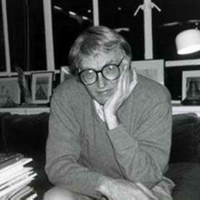
William Kilborn Knott (17 February 1940– 12 March 2014) was an American poet. Life Born in Carson City, Michigan, US, Knott received his MFA from Norwich University and studied with John Logan in Chicago. His first collection of poems, The Naomi Poems: Corpse and Beans, was published in 1968 under the name Saint Geraud, a fictional persona whose backstory included a suicide two years prior to the publishing. The Naomi Poems was well received and brought him to the attention of such poets as James Wright, who called him an “unmistakable genius.” Knott taught at Emerson College for more than 25 years, published many books of poetry, and was awarded the Iowa Poetry Prize and a Guggenheim fellowship. Work Early in his career, Knott was noted for writing unusually short poems, some as short as one line, and untitled. Later he became interested in metrical verse forms and syllabics. He was not a believer in poetic “branding” and throughout his career refused to restrict himself to one particular school or style of writing. His poetry’s subjects, themes and tones were also wide-ranging. His work often displayed a wry, self-deprecating sense of humor, and he was critical of what he saw as an epidemic of humorlessness in contemporary American poetry. Poets who cite him as an influence include Thomas Lux, Mary Karr, Stephen Dobyns, Denise Duhamel, and Denis Johnson. One of Johnson’s novels, Already Dead: A California Gothic, was inspired by Knott’s “Poem Noir.” Knott was also a visual artist, known for giving away booklets of his poetry with hand-painted covers. Bibliography * Books published by Bill Knott include: * The Naomi Poems: Book One: Corpse and Beans (1968), Follett, under the pseudonym 'St. Geraud’ * Aurealism: A Study (1969), Salt Mound Press. (chapbook) * Auto-Necrophilia; The _____ Poems, Book 2 (1971), Big Table Pub., ISBN 0-695-80188-0 * Nights of Naomi (1972), Big Table (chapbook) * Love Poems to Myself (1974), Barn Dream Press, Boston, OCLC 3709433 (chapbook) * Rome in Rome (1976), Release Press. * Selected and Collected Poems (1977), SUN * Becos (1983), Random House, ISBN 0-394-52924-3 * Outremer (1989), University of Iowa Press, ISBN 0-87745-255-5 * Poems 1963-1988 (1989), University of Pittsburgh Press, ISBN 0-8229-5416-8 * Collected Political Poems 1965-1993 (1993) Self-published chapbook * Sixty Poems of Love and Homage (1994) Self-published chapbook * The Quicken Tree (1995), Boa Editions, Hardcover ISBN 1-880238-24-1 Softcover ISBN 1-880238-25-X * Laugh at the End of the World: Collected Comic Poems 1969-1999 (2000), Boa Editions, ISBN 1-880238-84-5 * The Unsubscriber (2004), Farrar, Straus and Giroux, ISBN 0-374-53014-9 * Stigmata Errata Etcetera (2007), Saturnalia Books, ISBN 978-0-9754990-4-7 * He also collaborated on a novel with James Tate, Lucky Darryl (Release Press, 1977). ISBN 978-0913722107 References Wikipedia—https://en.wikipedia.org/wiki/Bill_Knott_(poet)
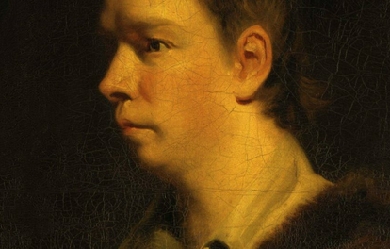

Oliver Goldsmith (10 November 1728– 4 April 1774) was an Irish novelist, playwright and poet, who is best known for his novel The Vicar of Wakefield (1766), his pastoral poem The Deserted Village (1770), and his plays The Good-Natur’d Man (1768) and She Stoops to Conquer (1771, first performed in 1773). He is thought to have written the classic children’s tale The History of Little Goody Two-Shoes (1765). Biography Goldsmith’s birth date and year are not known with certainty. According to the Library of Congress authority file, he told a biographer that he was born on 10 November 1728. The location of his birthplace is also uncertain. He was born either in the townland of Pallas, near Ballymahon, County Longford, Ireland, where his father was the Anglican curate of the parish of Forgney, or at the residence of his maternal grandparents, at the Smith Hill House in the diocese of Elphin, County Roscommon where his grandfather Oliver Jones was a clergyman and master of the Elphin diocesan school, and where Oliver studied. When Goldsmith was two years old, his father was appointed the rector of the parish of “Kilkenny West” in County Westmeath. The family moved to the parsonage at Lissoy, between Athlone and Ballymahon, and continued to live there until his father’s death in 1747. In 1744 Goldsmith went up to Trinity College, Dublin. His tutor was Theaker Wilder. Neglecting his studies in theology and law, he fell to the bottom of his class. In 1747, along with four other undergraduates, he was expelled for a riot in which they attempted to storm the Marshalsea Prison. He was graduated in 1749 as a Bachelor of Arts, but without the discipline or distinction that might have gained him entry to a profession in the church or the law; his education seemed to have given him mainly a taste for fine clothes, playing cards, singing Irish airs and playing the flute. He lived for a short time with his mother, tried various professions without success, studied medicine desultorily at the University of Edinburgh from 1752 to 1755, and set out on a walking tour of Flanders, France, Switzerland and Northern Italy, living by his wits (busking with his flute). He settled in London in 1756, where he briefly held various jobs, including an apothecary’s assistant and an usher of a school. Perennially in debt and addicted to gambling, Goldsmith produced a massive output as a hack writer for the publishers of London, but his few painstaking works earned him the company of Samuel Johnson, with whom he was a founding member of “The Club”. There, through fellow Club member Edmund Burke, he made the acquaintance of Sir George Savile, who would later arrange a job for him at Thornhill Grammar School. The combination of his literary work and his dissolute lifestyle led Horace Walpole to give him the epithet inspired idiot. During this period he used the pseudonym “James Willington” (the name of a fellow student at Trinity) to publish his 1758 translation of the autobiography of the Huguenot Jean Marteilhe. Goldsmith was described by contemporaries as prone to envy, a congenial but impetuous and disorganised personality who once planned to emigrate to America but failed because he missed his ship. At some point around this time he worked at Thornhill Grammar School, later basing Squire Thornhill (in the Vicar of Wakefield) on his benefactor Sir George Savile and certainly spending time with eminent scientist Rev. John Mitchell, who he probably knew from London. Mitchell, sorely missed good company, which Goldsmith naturally provided in spades.Thomas De Quincey wrote of him 'All the motion of Goldsmith’s nature moved in the direction of the true, the natural, the sweet, the gentle’. His premature death in 1774 may have been partly due to his own misdiagnosis of his kidney infection. Goldsmith was buried in Temple Church in London. The inscription reads; "HERE LIES/OLIVER GOLDSMITH". There is a monument to him in the centre of Ballymahon, also in Westminster Abbey with an epitaph written by Samuel Johnson. Works * See The Vicar of Wakefield, The Good-Natur’d Man, The Traveller, and She Stoops to Conquer. The Citizen of the World * In 1760 Goldsmith began to publish a series of letters in the Public Ledger under the title The Citizen of the World. Purportedly written by a Chinese traveller in England by the name of Lien Chi, they used this fictional outsider’s perspective to comment ironically and at times moralistically on British society and manners. It was inspired by the earlier essay series Persian Letters by Charles de Secondat, Baron de Montesquieu. The Hermit * Goldsmith wrote this romantic ballad of precisely 160 lines in 1765. The hero and heroine are Edwin, a youth without wealth or power, and Angelina, the daughter of a lord “beside the Tyne.” Angelina spurns many wooers, but refuses to make plain her love for young Edwin. “Quite dejected with my scorn,” Edwin disappears and becomes a hermit. One day, Angelina turns up at his cell in boy’s clothes and, not recognising him, tells him her story. Edwin then reveals his true identity, and the lovers never part again. The poem is notable for its interesting portrayal of a hermit, who is fond of the natural world and his wilderness solitude but maintains a gentle, sympathetic demeanor toward other people. In keeping with eremitical tradition, however, Edwin the Hermit claims to "spurn the [opposite] sex." This poem appears under the title of “A Ballad” sung by the character of Mr. Burchell in Chapter 8 of Goldsmith’s novel, The Vicar of Wakefield. The Deserted Village * In the 1760s Goldsmith witnessed the demolition of an ancient village and destruction of its farms to clear land to become a wealthy man’s garden. His poem The Deserted Village, published in 1770, expresses a fear that the destruction of villages and the conversion of land from productive agriculture to ornamental landscape gardens would ruin the peasantry. Other works * The Complete Poetical Works of Oliver Goldsmith (ed) Austin Dobson, 1887, kindle ebook March 2011 ASIN B004TP31VM * The ironic poem, An Elegy on the Death of a Mad Dog was published in 1766. * A History of the Earth and Animated Nature (1774) * Goldsmith is also thought to have written the classic children’s tale The History of Little Goody Two-Shoes. Memorials concerning Oliver Goldsmith * Goldsmith lived in Kingsbury, now in North-West London between 1771 and 1774 and Oliver Goldsmith Primary School and Goldsmith Lane there are named after him. * The Oliver Goldsmith Summer School is held every June Bank Holiday at Ballymahon with poetry and creative readings being held at Goldsmith’s birthplace in nearby Pallas, Forgney. * In the play Marx in Soho by Howard Zinn, Marx makes a reference to Goldsmiths’ poem, The Deserted Village. * A statue of him by JH Foley stands at the Front Arch of Trinity College, Dublin (see image). * A statue of him stands in a limestone cell at the ruin of his birthplace in Pallas, Forgney, Ballymahon, County Longford. The statue is a copy of the Foley statue that stands outside Trinity college Dublin and is the focus point of the annual Oliver Goldsmith Summer School. * His name has been given to a new lecture theatre and student accommodation on the Trinity College campus: Goldsmith Hall. * Somerset Maugham used the last line from An Elegy on the Death of a Mad Dog in his novel The Painted Veil (1925). The character Walter Fane’s last words are The dog it was that died. * Auburn, Alabama, and Auburn University were named for the first line in Goldsmith’s poem: “Sweet Auburn, loveliest village of the plain.” Auburn is still referred to as the ‘loveliest village on the plain.’ * There is a statue in Ballymahon County Longford outside the town library by Irish Sculptor Éamonn O’ Doherty (1939 - 2011)which was unveiled in 1999. * London Underground locomotive number 16 (used on the Metropolitan line of the London Underground until 1962) was named Oliver Goldsmith. * Longford based band Goldsmith are named after the famous writer. * Athlone Institute of Technology library is named the Goldsmith Library In popular culture * Two characters in the 1951 comedy The Lavender Hill Mob quote the same line from Goldsmith’s poem “The Traveller”– a subtle joke, because the film’s plot involves the recasting of stolen gold. * During the opening credits of the SKY One adaptation of Sir Terry Pratchett’s Christmas story “The Hogfather”, a portrait of Goldsmith is shown as part of a hall of memorials to those “exhumed” by the “Ankh-Morpork Assassins’ Guild”. References Wikipedia—https://en.wikipedia.org/wiki/Oliver_Goldsmith

Receiving my graduate degree from JFK University in Consciousness and the Arts and undergraduate education in Language and Sociology from Howard University, my contributions to society include: improving the status of women in the American Society, consulting on family education and management. Before retiring, I worked as the Secretary for the U.S. Treasury, Proofreader for the Office of the Price Administration and was a Researcher and Public Relations Director for the Eisenhower Congressional Committee. I am now a Professional Volunteer. Some of my achievements are as follows: Senior Senator to the California Senior Legislature Past Presidency and/or Advisor: AAUW, Business and Professional Women, Richmond Plaza Neighborhood Council, Council for Civic Unity, Advisory Council on Aging, Mental Health Task Force on Aging, Elder Abuse Consortium, Ethnic and Handicapped Task Force. I am a proud parent of three children and grandparent of four grandchildren and I share my life with Joe, my husband, who retired as a General Dentist.
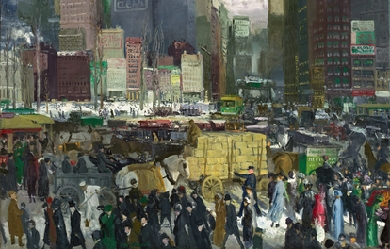
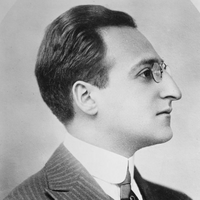
Louis Untermeyer (October 1, 1885 – December 18, 1977) was an American poet, anthologist, critic, and editor. He was appointed the fourteenth Consultant in Poetry to the Library of Congress in 1961. Untermeyer was born in New York City. He married Jean Starr in 1906. Their son Richard was born in 1907 and died under uncertain circumstances in 1927. After a 1926 divorce, they were reunited in 1929, after which they adopted two sons, Laurence and Joseph. He married the poet Virginia Moore in 1927; their son, John Moore Untermeyer (1928), was renamed John Fitzallen Moore after a painful 1929 divorce. In the 1930s, he divorced Jean Starr Untermeyer and married Esther Antin. This relationship also ended in divorce in 1945. In 1948, he married Bryna Ivens, an editor of Seventeen magazine. Untermeyer was known for his wit and his love of puns. For a while, he held Marxist beliefs, writing for magazines such as The Masses, through which he advocated that the United States stay out of World War I. After the suppression of that magazine by the U.S. government, he joined The Liberator, published by the Workers Party of America. Later he wrote for the independent socialist magazine The New Masses. He was a co-founder of "The Seven Arts," a poetry magazine that is credited for introducing many new poets, including Robert Frost, who became Untermeyer's long-term friend and correspondent. In 1950, Untermeyer was a panelist during the first year of the What's My Line? television quiz program. According to Bennett Cerf, Untermeyer would sign virtually any piece of paper that someone placed in front of him, and Untermeyer inadvertently signed a few Communist proclamations. According to Cerf, Untermeyer was not at all a communist, but he had joined several suspect societies that made him stand out. He was named during the hearings by the House Committee on Un-American Activities investigating communist subversion. The Catholic War Veterans and "right wing organizations" began hounding Mr. Untermeyer. Goodson-Todman, producer of the show, held out against the protests of Untermeyer for some time, but finally war veterans began picketing outside the New York City television studio from which What's My Line? was telecast live. The pressure became too great, and the sponsor Jules Montenier, inventor of Stopette deodorant, said, “After all, I'm paying a lot of money for this. I can't afford to have my product picketed.” At that point, the producers told Untermeyer that he had to leave the television series. The last live telecast on which he appeared was on March 11, 1951, and the mystery guest he questioned while blindfolded was Celeste Holm. The kinescope of this episode has been lost. His exit led to Bennett Cerf becoming a permanent member of the program. The controversy surrounding Untermeyer led to him being blacklisted by the television industry. According to Untermeyer's friend Arthur Miller, Untermeyer became so depressed by his forced departure from What's My Line? that he refused to leave his home in Brooklyn for more than a year, and his wife Bryna answered all incoming phone calls. It was she who eventually told Miller what had happened because Untermeyer would not pick up the phone to talk to him, even though Miller's support of blacklisted writers and radio and television personalities was well-known to Untermeyer and many others. But for more than a year, whenever Miller dialed the Untermeyers' phone number, Bryna "talked obscurely about [her husband Louis] not wanting phone conversations anymore, preferring to wait until we could all get together again," wrote Miller. Miller was a "very infrequent television watcher" in 1951, according to words he used in his 1987 autobiography, and so he did not notice that Bennett Cerf had replaced Untermeyer on the live TV game show. Miller did read New York City newspapers every day, but apparently there was no published report of Untermeyer's disappearance from television, therefore Miller was unaware that anything was wrong until Untermeyer's wife Bryna revealed what it was eventually after they had conversed by phone for more than a year. Louis Untermeyer was the author or editor of close to 100 books, from 1911 until his death. Many of them and his other memorabilia are preserved in a special section of the Lilly Library at Indiana University. Schools used his Modern American and British poetry books widely, and they often introduced college students to poetry. He and Bryna Ivens Untermeyer created a number of books for young people, under the Golden Treasury of Children's Literature. Utermeyer also rounded up contributors for a Modern Masters for Children series published by Crowell-Collier Press in the 1960s--the books were designed to have a vocabulary of 800 words and contributors included Robert Graves, Phylis McGinley, and Shirley Jackson. He lectured on literature for many years, both in the US and other countries. In 1956 the Poetry Society of America awarded Untermeyer a Gold Medal. He also served as the Consultant in Poetry to the Library of Congress from 1961 until 1963. Poetry collections * The Younger Quire (parodies), Mood Publishing, 1911. * First Love, French, 1911. * Challenge, Century, 1914. * These Times, Holt, 1917. * Including Horace, Harcourt, 1919. * The New Adam, Harcourt, 1920. * Roast Leviathan, Harcourt, 1923, reprinted, Arno, 1975. * (With son, Richard Untermeyer) Poems, privately printed, 1927. * Burning Bush, Harcourt, 1928. * Adirondack Cycle, Random House, 1929. * Food and Drink, Harcourt, 1932. * First Words before Spring, Knopf, 1933. * Selected Poems and Parodies, Harcourt, 1935. * For You with Love (juvenile), Golden Press, 1961. * Long Feud: Selected Poems, Harcourt, 1962. * One and One and One (juvenile), Crowell-Collier, 1962. * This Is Your Day (juvenile), Golden Press, 1964. * Labyrinth of Love, Simon & Schuster, 1965. * Thanks: A Poem (juvenile), Odyssey, 1965. * Thinking of You (juvenile), Golden Press, 1968. * A Friend Indeed, Golden Press, 1968. * You: A Poem, (juvenile), illustrations by Martha Alexander, Golden Press, 1969. References Wikipedia—https://en.wikipedia.org/wiki/Louis_Untermeyer
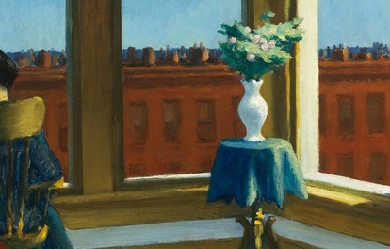
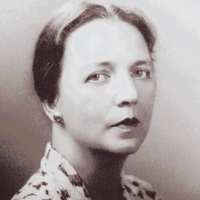
Louise Bogan (August 11, 1897– February 4, 1970) was an American poet. She was appointed the fourth Poet Laureate to the Library of Congress in 1945. As poetry editor of The New Yorker magazine for nearly 40 years, Bogan played a major role in shaping mainstream poetic sensibilities of the mid-20th Century. The Poetry Foundation notes that Bogan has been called by some critics the most accomplished woman poet of the twentieth century. It further notes that, “Some critics have placed her in a category of brilliant minor poets described as the ”reactionary generation." This group eschewed the prevailing Modernist forms that would come to dominate the literary landscape of the era in favor of more traditional techniques. Dictionary of Literary Biography contributor Brett C. Millier named Bogan “one of the finest lyric poets America has produced,” and added that “the fact that she was a woman and that she defended formal, lyric poetry in an age of expansive experimentation made evaluation of her work, until quite recently, somewhat condescending.” Biography Early years Bogan was born in Livermore Falls, Maine, where her father, Daniel Bogan, worked for various paper mills and bottling factories. She spent most of her childhood years with her parents and brother growing up in mill towns in Maine, New Hampshire, and Massachusetts, where she and her family lived in working-class hotels and boardinghouses until 1904. With the help of a female benefactor, Bogan was able to attend the Girls’ Latin School for five years, which eventually gave her the opportunity to attend Boston University. In 1916, after only completing her freshman year and giving up a fellowship to Radcliffe, she left the university to marry Curt Alexander, a corporal in the U.S. Army, but their marriage ended in 1918. Bogan moved to New York to pursue a career in writing, and their only daughter, Maidie Alexander, was left under the care of Bogan’s parents. After her first husband’s death in 1920, she left and spent a few years in Vienna, where she explored her loneliness and her new identity in verse. She returned to New York City and published her first book of poetry, Body of This Death: Poems, in 1923, meeting that year the poet and novelist Raymond Holden. They were married by 1925. Four years later, she published her second book of poetry, Dark Summer: Poems, and shortly after was hired as a poetry editor for The New Yorker. She was divorced from Holden in 1937. Career Bogan’s poetic style was unlike that of Ezra Pound or T. S. Eliot. Suzanne Clark, an English professor from the University of Oregon, stated that Bogan often refers to her female speakers as “the locus of intemperate, dangerous, antisocial desires.” This coincides with the notion that Bogan brought a different perspective to the traditional viewpoint of women. Not only was it difficult being a female poet in the 1930s and 1940s, but her lower-middle-class Irish background and limited education also brought on much ambivalence and contradiction for Louise Bogan. She even refused to review women poets in her early career and stated, “I have found from bitter experience that one woman poet is at a disadvantage in reviewing another, if the review be not laudatory.” Bogan did not discuss intimate details of her life (and disdained such confessional poets as Robert Lowell and John Berryman). Most of her work was published before 1938. This includes Body of This Death (1923), Dark Summer (1929), and The Sleeping Fury (1937). She also translated works by Ernst Jünger, Goethe, and Jules Renard. Later in Bogan’s life, a volume of her collected works, The Blue Estuaries: Poems 1923-1968, was published with such poems as “The Dream” and “Women.” In late 1969, shortly before her death, she ended her thirty-eight year career as a reviewer for The New Yorker, stating, “No more pronouncements on lousy verse. No more hidden competition. No more struggling not to be a square.” One of her admirers was W. H. Auden. Her poetry was published in The New Republic, The Nation, Poetry: A Magazine of Verse, Scribner’s, and Atlantic Monthly. Her Collected Poems: 1923-1953 won her the Bollingen award in 1955 as well as an award from the Academy of American Poets in 1959, and she was the poetry reviewer of The New Yorker from 1931 until 1969, when she retired. She was a strong supporter, as well as a friend, of the poet Theodore Roethke. In a letter to Edmund Wilson, she detailed a raucous affair that she and the yet-unpublished Roethke carried on in 1935, during the time between his expulsion from Lafayette College and his return to Michigan. At the time she seemed little impressed by what she called his “very, very small lyrics”; she seems to have viewed the affair as, at most, a possible source for her own work (see What the Woman Lived: Collected letters of Louise Bogan). On February 4, 1970, Louise Bogan died of a heart attack in New York City. The Archives and Special Collections at Amherst College holds some of her papers. A number of autobiographical pieces were published posthumously in Journey around My Room (1980). Elizabeth Frank’s biography of Louise Bogan, Louise Bogan: A Portrait, won a Pulitzer Prize in 1986. Ruth Anderson’s sound poem I Come Out of Your Sleep (revised and recorded on Sinopah 1997 XI) is constructed from speech sounds in Bogan’s poem “Little Lobelia.” “I cannot believe that the inscrutable universe turns on an axis of suffering; surely the strange beauty of the world must somewhere rest on pure joy!”– Louise Bogan In 1923, Louise Bogan released her first volume of poetry, Body of this Death, containing her poem “Medusa”. Though open to interpretation, “Medusa” is a poem that revolves around the petrification of the speaker who contemplates the concept of time. In the poem, after the speaker bears witness to the apparition of the Gorgon Medusa, the speaker ponders on how nature and life will continue, as “the water will always fall, and will not fall” and “the grass will always be growing for hay” while “I shall stand here like a shadow” and “nothing will ever stir”. While many interpretations of the poem exist, one possible explanation for the bleakness of this poem may revolve around Bogan’s depression and solitude after divorcing from her first husband and living in poverty with a daughter in hand. The idea that one would become petrified and lost in time by Medusa is similar to a feeling of loss and despair as one feels helpless and stuck in a situation where one feels their situation is unchangeable. Brett C. Millier, a Professor of Literature at Middlebury College describes Bogan’s poetry as one where “Betrayal, particularly sexual betrayal, is a constant theme.” At a time where she most likely felt betrayed by her husband and society, Bogan feels like the speaker in “Medusa”, stuck in a dead scene where her eyes could no longer drift away to a better life. Personal life Bogan married twice. In 1916 she married a soldier, Curt Alexander, and had one daughter, but the couple separated before Alexander’s death in 1920. She was married to poet Raymond Holden from July 10, 1925 to 1937. Despite the hardships Bogan encountered during the twenties and thirties, she was able to experience the fascinations of Renaissance painting, sculpture, and ornament. References Modern American Poetry: Louise Bogan (1897-1970) Biography at poets.org The Dream by Louise Bogan Vita: Suzanne Clark Louise Bogan Quotes External links Bogan Papers, Amherst College Archives and Special Collections The Louise Bogan Papers at Washington University in St. Louis Modern American Poetry, critical essays on Bogan’s works Academy of American Poets Works by or about Louise Bogan at Internet Archive Works by Louise Bogan at LibriVox (public domain audiobooks)
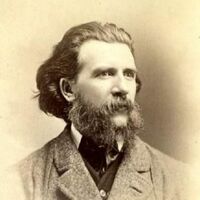
Gerald Massey (29 May 1828 – 29 October 1907) was an English poet and writer on Spiritualism and Ancient Egypt. Early life Massey was born near Tring, Hertfordshire in England to poor parents. When little more than a child, he was made to work hard in a silk factory, which he afterward deserted for the equally laborious occupation of straw plaiting. These early years were rendered gloomy by much distress and deprivation, against which the young man strove with increasing spirit and virility, educating himself in his spare time, and gradually cultivating his innate taste for literary work. He was attracted by the movement known as Christian Socialism, into which he threw himself with whole-hearted vigour, and so became associated with Frederick Denison Maurice and Charles Kingsley. Later life From about 1870 onwards, Massey became increasingly interested in Egyptology and the similarities that exist between ancient Egyptian mythology and the Gospel stories. He studied the extensive Egyptian records housed in the Assyrian and Egyptology section of the British Museum in London where he worked closely with the curator, Dr. Samuel Birch, and other leading Egyptologists of his day, even learning hieroglyphics at the time the Temple of Horus at Edfu was first being excavated. Writing career Massey's first public appearance as a writer was in connection with a journal called the Spirit of Freedom, of which he became editor, and he was only twenty-two when he published his first volume of poems, Voices of Freedom and Lyrics of Love (1850). These he followed in rapid succession with The Ballad of Babe Christabel (1854), War Waits (1855), Havelock's March (1860), and A Tale of Eternity (1869). In 1889, Massey published a two-volume collection of his poems called My Lyrical Life. He also published works dealing with Spiritualism, the study of Shakespeare's sonnets (1872 and 1890), and theological speculation. It is generally understood that he was the original of George Eliot's Felix Holt.[1] Massey's poetry has a certain rough and vigorous element of sincerity and strength which easily accounts for its popularity at the time of its production. He treated the theme of Sir Richard Grenville before Tennyson thought of using it, with much force and vitality. Indeed, Tennyson's own praise of Massey's work is still its best eulogy, for the Laureate found in him a poet of fine lyrical impulse, and of a rich half-Oriental imagination. The inspiration of his poetry is a combination of his vast knowledge based on travels, research and experiences; he was a patriotic humanist to the core. His poem "The Merry, Merry May" was set to music in 1894 by the composer Cyril Rootham and then in a popular song by composer Christabel Baxendale. In regard to Ancient Egypt, Massey first published The Book of the Beginnings, followed by The Natural Genesis. His most prolific work is Ancient Egypt: The Light of the World, published shortly before his death. Massey was a believer in spiritual evolution; he opined that Darwin's theory of evolution was incomplete without spiritualism: The theory contains only one half the explanation of man's origins and needs spiritualism to carry it through and complete it. For while this ascent on the physical side has been progressing through myriads of ages, the Divine descent has also been going on – man being spiritually an incarnation from the Divine as well as a human development from the animal creation. The cause of the development is spiritual. Mr. Darwin's theory does not in the least militate against ours – we think it necessitates it; he simply does not deal with our side of the subject. He can not go lower than the dust of the earth for the matter of life; and for us, the main interest of our origin must lie in the spiritual domain. Assertions about Jesus and Horus One of the more important aspects of Massey's writings were his assertions that there were parallels between Jesus and the Egyptian god Horus, primarily contained in book The Natural Genesis first published in 1883. Massey, for example, argued in the book his belief that: both Horus and Jesus were born of virgins on 25 December, raised men from the dead (Massey speculates that the biblical Lazarus, raised from the dead by Jesus, has a parallel in El-Asar-Us, a title of Osiris), died by crucifixion and were resurrected three days later.[5] These assertions have influenced various later writers such as Alvin Boyd Kuhn, Tom Harpur, Yosef Ben-Jochannan, and Dorothy M. Murdock.[6][7][unreliable source?] Like Godfrey Higgins a half-century earlier, Massey believed that Western religions had mythical roots. The human mind has long suffered an eclipse and been darkened and dwarfed in the shadow of ideas the real meaning of which has been lost to moderns. Myths and allegories whose significance was once unfolded in the Mysteries have been adopted in ignorance and reissued as real truths directly and divinely vouchsafed to humanity for the first and only time! The early religions had their myths interpreted. We have ours misinterpreted. And a great deal of what has been imposed on us as God’s own true and sole revelation to us is a mass of inverted myths. Christian ignorance notwithstanding, the Gnostic Jesus is the Egyptian Horus who was continued by the various sects of gnostics under both the names of Horus and of Jesus. In the gnostic iconography of the Roman Catacombs child-Horus reappears as the mummy-babe who wears the solar disc. The royal Horus is represented in the cloak of royalty, and the phallic emblem found there witnesses to Jesus being Horus of the resurrection. Criticism Christian theologian W. Ward Gasque, a Ph.D. from Harvard and Manchester University, sent emails to twenty Egyptologists that he considered leaders of the field – including Kenneth Kitchen of the University of Liverpool and Ron Leprohan of the University of Toronto – in Canada, the United States, Britain, Australia, Germany and Austria to verify academic support for some of these assertions. His primary targets were Tom Harpur, Alvin Boyd Kuhn and the Christ myth theory, and only indirectly Massey. Ten out of twenty responded, but most were not named. According to Gasque, Massey's work, which draws comparisons between the Judeo-Christian religion and the Egyptian religion, is not considered significant in the field of modern Egyptology and is not mentioned in the Oxford Encyclopedia of Ancient Egypt or similar reference works of modern Egyptology. Gasque reports that those who responded were unanimous in dismissing the proposed etymologies for Jesus and Christ, and one unspecified Egyptologist referred to Alvin Boyd Kuhn's comparison as "fringe nonsense."[11][unreliable source?] However, Harpur's response to Gasque quotes leading contemporary Egyptologist Erik Hornung that there are parallels between Christianity and ancient Egypt, as do the writings of biblical expert Thomas L. Thompson. Theologian Stanley E. Porter has pointed out that Massey's analogies include a number of errors, for example Massey stated that 25 December as the date of birth of Jesus was selected based on the birth of Horus, but the New Testament does not include any reference to the date or season of the birth of Jesus. The earliest known source recognizing 25 December as the date of birth of Jesus is by Hippolytus of Rome, written around the beginning of the 3rd century, based on the assumption that the conception of Jesus took place at the Spring equinox. Hippolytus placed the equinox on 25 March and then added 9 months to get 25 December, thus establishing the date for festivals. The Roman Chronography of 354 then included an early reference to the celebration of a Nativity feast in December, as of the fourth century. Porter states that Massey's serious historical errors often render his works nonsensical, for example Massey states that the biblical references to Herod the Great were based on the myth of "Herrut" the evil hydra serpent, while the existence of Herod the Great can be well established without reliance on Christian sources. References Wikipedia—https://en.wikipedia.org/wiki/Gerald_Massey

I'm just another person trying to spread this art in the form of words to convey an imagine that can't be seen but only heard. Don't expect a traditional poem cause my writing has no structure Hope you enjoy reading my work, please feel free to leave comments good or bad! I would love to hear what you all think of it.


Archie Randolph Ammons (February 18, 1926– February 25, 2001) was an American poet who won the annual National Book Award for Poetry in 1973 and 1993. Preface Ammons wrote about humanity’s relationship to nature in alternately comic and solemn tones. His poetry often addresses religious and philosophical matters and scenes involving nature, almost in a Transcendental fashion. According to reviewer Daniel Hoffman, his work “is founded on an implied Emersonian division of experience into Nature and the Soul,” adding that it "sometimes consciously echo[es] familiar lines from Emerson, Whitman and [Emily] Dickinson.” Life Ammons grew up on a tobacco farm near Whiteville, North Carolina, in the southeastern part of the state. He served in the U.S. Navy during World War II, stationed on board the U.S.S. Gunason, a battleship escort. After the war, Ammons attended Wake Forest University, majoring in biology. Graduating in 1949, he served as a principal and teacher at Hattaras Elementary School later that year and also married Phyllis Plumbo. He received an M.A. in English from the University of California, Berkeley. In 1964, Ammons joined the faculty of Cornell University, eventually becoming Goldwin Smith Professor of English and Poet in Residence. He retired from Cornell in 1998. Ammons had been a longtime resident of the South Jersey communities of Northfield, Ocean City and Millville, when he wrote Corsons Inlet in 1962. Awards * During the five decades of his poetic career, Ammons was the recipient of many awards and citations. Among his major honors are the 1973 and 1993 U.S. National Book Awards (for Collected Poems, 1951-1971 and for Garbage); the Wallace Stevens Award from the Academy of American Poets (1998); and a MacArthur Fellowship in 1981, the year the award was established. A school in Miami, Florida, was named after him. * Ammons’s other awards include a 1981 National Book Critics Circle Award for A Coast of Trees; a 1993 Library of Congress Rebekah Johnson Bobbitt National Prize for Poetry for Garbage; the 1971 Bollingen Prize for Sphere; the Poetry Society of America’s Robert Frost Medal; the Ruth Lilly Prize; and fellowships from the Guggenheim Foundation and the American Academy of Arts and Letters. He was elected a Fellow of the American Academy of Arts and Sciences in 1978. Poetic style * Ammons often writes in two– or three-line stanzas. Poet David Lehman notes a resemblance between Ammons’s terza libre (unrhymed three-line stanzas) and the terza rima of Shelley’s “Ode to the West Wind.” Lines are strongly enjambed. * Some of Ammons’s poems are very short, one or two lines only, a form known as monostich (effectively, including the title, a kind of couplet), while others (for example, the book-length poems Sphere and Tape for the Turn of the Year) are hundreds of lines long, and sometimes composed on adding-machine tape or other continuous strips of paper. His National Book Award-winning volume Garbage is a long poem consisting of “a single extended sentence, divided into eighteen sections, arranged in couplets”. Ammons’s long poems tend to derive multiple strands from a single image. * Many readers and critics have noted Ammons’s idiosyncratic approach to punctuation. Lehman has written that Ammons “bears out T. S. Eliot’s observation that poetry is a 'system of punctuation’.” Instead of periods, some poems end with an ellipsis; others have no terminal punctuation at all. The colon is an Ammons “signature”; he uses it “as an all-purpose punctuation mark.” * The colon permits him to stress the linkage between clauses and to postpone closure indefinitely.... When I asked Archie about his use of colons, he said that when he started writing poetry, he couldn’t write if he thought “it was going to be important,” so he wrote "on the back of used mimeographed paper my wife brought home, and I used small [lowercase] letters and colons, which were democratic, and meant that there would be something before and after [every phrase] and the writing would be a kind of continuous stream." * According to critic Stephen Burt, in many poems Ammons combines three types of diction: * A “normal” range of language for poetry, including the standard English of educated conversation and the slightly rarer words we expect to see in literature (“vast,” “summon,” “universal”). * A demotic register, including the folk-speech of eastern North Carolina, where he grew up (“dibbles”), and broader American chatter unexpected in serious poems (“blip”). * The Greek– and Latin-derived phraseology of the natural sciences (“millimeter,” “information of actions / summarized”), especially geology, physics, and cybernetics. * Such a mixture is nearly unique, Burt says; these three modes are “almost never found together outside his poems”. Works * * Poetry * Ommateum, with Doxology. Philadelphia: Dorrance, 1955. * Expressions of Sea Level. Columbus: Ohio State UP, 1964. * Corsons Inlet. Ithaca, NY: Cornell UP, 1965. Reprinted by Norton, 1967. ISBN 0-393-04463-7 * Tape for the Turn of the Year. Ithaca, NY: Cornell UP, 1965. Reprinted by Norton, 1972. ISBN 0-393-00659-X * Northfield Poems. Ithaca, NY: Cornell UP, 1966. * Selected Poems. Ithaca, NY: Cornell UP, 1968. * Uplands. New York: Norton, 1970. ISBN 0-393-04322-3 * Briefings: Poems Small and Easy. New York: Norton, 1971. ISBN 0-393-04326-6 * Collected Poems, 1951-1971. New York: Norton, 1972. ISBN 0-393-04241-3—winner of the National Book Award * Sphere: The Form of a Motion. New York: Norton, 1974. ISBN 0-393-04388-6—winner of the Bollingen Prize for Poetry * Diversifications. New York: Norton, 1975. ISBN 0-393-04414-9 * The Selected Poems: 1951-1977. New York: Norton, 1977. ISBN 0-393-04465-3 * Highgate Road. Ithaca, NY: Cornell UP, 1977. * The Snow Poems . New York: Norton, 1977. ISBN 0-393-04467-X * Selected Longer Poems. New York: Norton, 1980. ISBN 0-393-01297-2 * A Coast of Trees. New York: Norton, 1981. ISBN 0-393-01447-9—winner of the National Book Critics Circle Award * Worldly Hopes. New York: Norton, 1982. ISBN 0-393-01518-1 * Lake Effect Country. New York: Norton, 1983. ISBN 0-393-01702-8 * The Selected Poems: Expanded Edition. New York: Norton, 1986. ISBN 0-393-02411-3 * Sumerian Vistas. New York: Norton, 1987. ISBN 0-393-02468-7 * The Really Short Poems. New York: Norton, 1991. ISBN 0-393-02870-4 * Garbage. New York: Norton, 1993. ISBN 0-393-03542-5—winner of the National Book Award * The North Carolina Poems. Alex Albright, ed. Rocky Mount, NC: NC Wesleyan College P, 1994. ISBN 0-933598-51-3 * Brink Road.New York: Norton, 1996. ISBN 0-393-03958-7 * Glare. New York: Norton, 1997. ISBN 0-393-04096-8 * Bosh and Flapdoodle: Poems. New York: Norton, 2005. ISBN 0-393-05952-9 * Selected Poems. David Lehman, ed. New York: Library of America, 2006. ISBN 1-931082-93-6 * The North Carolina Poems. New, expanded edition. Frankfort, KY: Broadstone Books, 2010. ISBN 978-0-9802117-2-6 * The Mule Poems. Fountain, NC: R. A. Fountain, 2010. ISBN 0-9842102-0-2 (chapbook) * Prose * Set in Motion: Essays, Interviews, and Dialogues (1996) * An Image for Longing: Selected Letters and Journals of A.R. Ammons, 1951-1974. Ed. Kevin McGuirk. Victoria, BC: ELS Editions, 2014. ISBN 978-1550584561 References Wikipedia—https://en.wikipedia.org/wiki/A._R._Ammons
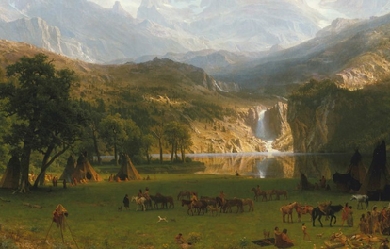
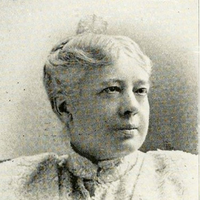
Margaret Elizabeth Sangster (February 22, 1838 – 1912) was an American poet, author, and editor. She was popular in the late 19th and early 20th century. Sangster was the daughter of John Munson of Ireland and Margaret Chisholm of New York. Her father was in the marble industry in New York City. Margaret and her younger sister Isabell grew up in a very religious household and the two sisters were well educated. Sangster held editorial positions with a number of periodicals including, Hearth and Home, The Christian at Work, Harper's Young People and eventually became an editor at Harper’s Bazaar from 1889 to 1899. Through her work she became acquainted with notable people of her age, including Mark Twain and Helen Keller. Other than Harper’s Bazaar, she contributed to Ladies' Home Journal, Hearth and Home, and the Christian Intelligencer, The Christian Union (later became The Outlook), The Congregationalist and The Christian Herald. Among Sangster's prose works are several volumes of stories for children, and of these, Little Jamie was written when she was seventeen years old. Hours with Girls and Winsome Womanhood were her most popular works. Her volumes of poetry include, Poems of the Household, Home Fairies and Heart Flowers, On the Road Home and Easter Bells. Sangster grew up a devout member of the Dutch Reformed Church and wrote many hymns and sacred texts. These include a setting of the Te Deum Laudamus and a hymn called, Thine is the Power, which gained a fair degree of popularity in its time.[2] In 1902 Sangster wrote the introduction to the book, Happenings in Our Home, a book where a family could record the important events in their lives such as births, deaths, weddings, vacations, and holidays. Sangster spent most of her life in New York and New Jersey. She married George Sangster in 1858 and essentially gave up writing until after his death in 1871. She never remarried and she died in 1912. Her nephew, Charles Chisholm Brainerd, was married to the author Eleanor Hoyt Brainerd.
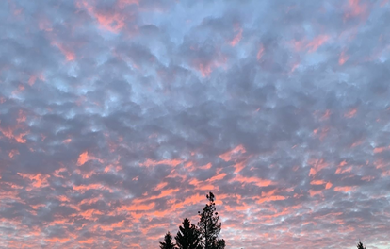

Throughout the years, the reasoning behind my writing has changed. Maybe it was a broken heart, a bad experience, falling in love or out of touch, finding myself, getting lost, escaping the crazy world we live in. Whatever the reason, writing is my solace. It’s the one place I can be completely at one with myself, where I am harmonious and comfortable with the ugly truths being human. I aim to paint the minds of others the way my experiences have painted mine, and hopefully share in my words the feelings I so deeply feel immersed in. Welcome to my world.
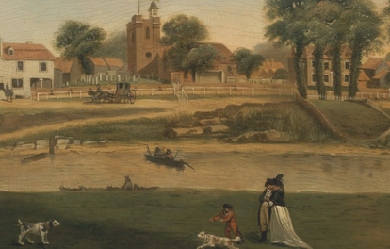
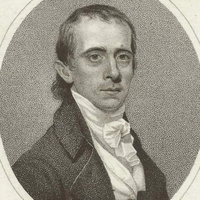
Robert Bloomfield (3 December 1766– 19 August 1823) was an English labouring class poet whose work is appreciated in the context of other self-educated writers such as Stephen Duck, Mary Collier and John Clare. Life Robert Bloomfield was born of a poor family in the village of Honington, Suffolk. His father was a tailor and died of smallpox when the son was a year old. It was from his mother Elizabeth, who kept the village school, that he received the rudiments of education. Apprenticed at the age of eleven to his mother’s brother-in-law, he worked on a farm which was part of the estate of the Duke of Grafton, his future patron. Four years later, owing to his small and weak stature (in adulthood Bloomfield was just five feet tall) he was sent to London to work as a shoemaker under his elder brother George. One of his early duties was to read the papers aloud while the others in the workshop were working and he became particularly interested in the poetry section of The London Magazine. He had his first poem, “The Village Girl”, published in 1786. When his brother George returned to Suffolk in that year, he set up on his own as a cobbler and in 1790 married Mary Ann Church, by whom he was to have five children. The poem that made his reputation, The Farmer’s Boy, was composed in a garret in Bell Alley, Coleman Street. It was influenced by James Thomson’s poem The Seasons. Bloomfield was able to carry some fifty to a hundred finished lines of it in his head at a time until there was opportunity to write them down. The manuscript was declined by several publishers and was eventually shown by his brother George to Capel Lofft, a radical Suffolk squire of literary tastes, who arranged for its publication with woodcuts by Thomas Bewick in 1800. The success of the poem was remarkable, over 25,000 copies being sold in the next two years. Also reprinted in several American editions, it appeared in German translation in Leipzig, translated into French as Le Valet du Fermier in Paris, and in Italian translation in Milan; there was even a Latin translation of parts of it, De Agricolae Puero, Anglicano Poemate celeberrimo excerptum, et in morem Latini Georgice redditum, by the lively Suffolk vicar William Clubbe. The poem was particularly admired by the Suffolk-born painter John Constable who used couplets from it as tags to two paintings: a 'Ploughing Scene’ (shown at the Royal Academy in 1814) and 'A Harvest Field, Reapers, Gleaners’ (shown at the British Institution in 1817), which he noted as deriving from 'Bloomfield’s poem’. It was also admired by Robert Southey, a Romantic poet and future poet laureate. While this success helped reduce his poverty for a while, it also took him away from his work. As a result, the Duke of Grafton, who lived at Euston Hall near the village of Bloomfield’s birth, settled on him a small annuity of £15 and used his influence to gain him employment in the Seal Office to the King’s Bench Court and then at Somerset House, but he worked in neither for long. Meanwhile, Bloomfield’s reputation was increased by the appearance of his Rural Tales (1802), several poems of which were set to music by his brother Isaac. Another of them, “The Miller’s Maid”, was made an opera by John Davy (1763–1824) in 1804 and formed the basis for a two-act melodrama by John Faucit Saville (1807–1855) in 1821. Other publications by Bloomfield included Good Tidings (written in praise of inoculation at the instigation of Edward Jenner, 1804); Wild Flowers or Pastoral and Local Poetry (1806); and The Banks of the Wye (the poetic journal of a walking tour in the footsteps of Wordsworth, 1811). Unfortunately Vernor and Hood, his publishers, went bankrupt and in 1812 Bloomfield was forced to move from London into a cottage rented to him by a friend in the Bedfordshire village of Shefford. There one of his daughters died in 1814 and his wife became insane. In order to support himself he tried to carry on business as a bookseller but failed, and in his later years was reduced to making Aeolian harps which he sold among his friends. With failing eyesight, his own reason threatened by depression, he died in great poverty on 19 August 1823. In order to pay his debts and cover the funeral expenses, his collection of books and manuscripts, and his household effects, had to be auctioned. Allied to this fund-raising was the publication that year of his drama, Hazlewood Hall, and in the following year of The Remains of Robert Bloomfield, which included writing for children on which he had been working for some years and a selection of his correspondence. Poetry Bloomfield’s poetry invites comparison with that of George Crabbe, who was also a native of Suffolk. Both wrote much in iambic pentameter couplets, both provide descriptions of rural life in its hardest and least inviting forms. Bloomfield, however, is more cheerful in tone and his verse is denser and more vigorous. Here, for instance, is the episode in “The Farmer’s Boy” where Giles chops up turnips to feed the livestock in winter: On GILES, and such as Giles, the labour falls, To strew the frequent load where hunger calls. On driving gales sharp hail indignant flies, And sleet, more irksome still, assails his eyes; Snow clogs his feet; or if no snow is seen, The field with all its juicy store to screen, Deep goes the frost, till every root is found A rolling mass of ice upon the ground. No tender ewe can break her nightly fast, Nor heifer strong begin the cold repast, Till Giles with pond’rous beetle foremost go, And scatt’ring splinters fly at every blow; When pressing round him, eager for the prize, From their mixt breath warm exhalations rise. However, such verse is little varied from that of many of Bloomfield’s contemporaries, such as James Montgomery and Ebenezer Elliot whose names, like his, were well known in their time but are scarcely remembered now. Besides such formal productions, he told many light-hearted stories in octosyllabics, some of which are interesting for their employment of Suffolk dialect words, particularly in “The Horkey”. His work served as an inspiration to John Clare, who began publishing his own rural poetry in 1820 and praised Bloomfield’s highly. Robert’s brother, Nathaniel, also published a collection of poetry in 1803, An Essay on War, in Blank Verse, and Other Poems. Byron commented on the brothers in English Bards and Scotch Reviewers (lines 775-86), linking Robert’s name favourably with other poets of humble beginnings such as Burns and Gifford but dismissing Nathaniel’s writing as routine and uninspired. Byron returned to the charge in Hints from Horace with the apostrophe Hark to those lines, narcotically soft, The cobbler-laureats sing to Capel Lofft! (lines 733-4) Although a note makes it clear than Nathaniel is his principal target, he also seems to include 'his brother Bobby’ in the accusation that Lofft 'has spoiled some excellent shoemakers and been accessory to the poetic undoing of many of the industrious poor’. Later Reputation In 1973 Shefford’s secondary school was converted to a middle school (for pupils aged 9–13) and named after the poet. In 2000 the Robert Bloomfield Society was founded to promote awareness of his life and work and has encouraged scholarly publications relating to him. A revised and enlarged selection of his poems was published by Trent Editions in 2007. Recent studies of his poetry evaluate it within its social as well as its literary context. References Wikipedia—https://en.wikipedia.org/wiki/Robert_Bloomfield








